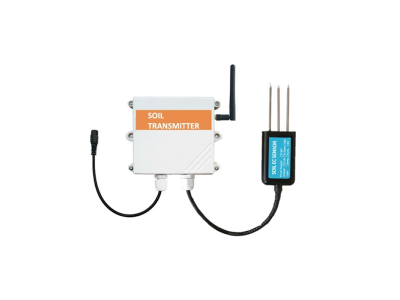Agriculture has always been a vital aspect of human civilization, providing sustenance and nourishment for communities around the world. However, the key to successful and sustainable agriculture lies in understanding the secrets hidden beneath our feet - productive soil. Over the years, scientists and researchers have sought ways to unlock the mysteries of soil health and fertility. In recent times, advancements in soil sensor systems have revolutionized our approach to soil management, offering precise data and insights for optimizing agricultural practices. This article delves into the exciting developments and benefits of soil sensor systems in modern agriculture.
Understanding Soil Health
To comprehend the significance of soil sensor systems, it is essential to first explore the concept of soil health. Soil health refers to the capacity of soil to sustain plant growth, maintain ecosystem functions, and provide a conducive environment for soil organisms. It involves various interrelated factors such as nutrient content, pH levels, organic matter, and microbial activity. Healthy soil acts as a reservoir, storing water and nutrients, fostering root development, and improving crop yield. Monitoring and managing soil health is crucial for maximizing productivity and minimizing environmental impact.
The Role of Soil Sensor Systems
Traditionally, assessing soil health and fertility relied on visual observation, laboratory analysis, and experience-based agronomic practices. However, these methods are time-consuming, labor-intensive, and often lack real-time data. This is where soil sensor systems come into play. These innovative technologies use a combination of sensors, probes, and data analytics to monitor key soil parameters, enabling farmers and agronomists to make informed decisions for optimal land management. From assessing nutrient levels to monitoring moisture content, soil sensor systems offer an array of benefits.
Advancements in Soil Sensor Systems
In recent years, significant advancements have been made in soil sensor systems, revolutionizing the way we monitor and manage soil health. Some notable developments include:
Moisture Sensors: Water is a vital component for plant growth, and too little or too much can adversely affect crop yield. Soil moisture sensors help farmers and growers determine the optimal water content in the soil, enabling efficient irrigation practices. These sensors measure soil moisture at different depths, providing valuable insights into root zone saturation levels and preventing waterlogging.
Nutrient Sensors: Nutrient deficiency or imbalances can hinder plant growth and reduce crop productivity. Nutrient sensors accurately measure the concentration of essential elements such as nitrogen, phosphorus, and potassium in the soil. This information enables precise fertilizer application, preventing overuse or wastage, and ensuring optimal nutrient uptake by plants.
pH Sensors: Soil pH plays a crucial role in nutrient availability and microbial activity. pH sensors help determine the acidity or alkalinity of the soil, guiding growers in adjusting pH levels for optimal plant growth. By maintaining the ideal pH range, nutrient availability is maximized, and soil-borne diseases can be mitigated.

Temperature Sensors: Soil temperature influences seed germination, root development, and microbial activity. Temperature sensors monitor soil temperatures at various depths, allowing growers to make informed decisions on planting times, crop selection, and irrigation practices. This ensures that crops are cultivated in the most favorable conditions for optimal growth.
Benefits and Future Implications
The integration of soil sensor systems into agricultural practices offers numerous benefits, including:
Precision Farming: Soil sensors provide real-time data, allowing farmers to implement precision farming techniques. This enables customized and site-specific management practices, reducing resource input, minimizing environmental impact, and maximizing crop yield.
Improved Resource Management: By precisely monitoring soil parameters, farmers can optimize the use of water, fertilizers, and pesticides. This leads to efficient resource management, reducing costs, and minimizing the risk of nutrient leaching or environmental pollution.
Early Detection of Problems: Soil sensors can detect changes in soil health before visible symptoms appear in the plants. This enables early intervention, preventing yield loss, and allowing prompt corrective measures, such as adjusting irrigation schedules or addressing nutrient deficiencies.
Looking ahead, the future of soil sensor systems appears promising. With advancements in wireless technology and data analytics, sensor networks can be scaled up for large-scale agricultural applications. Enhanced connectivity and integration with other smart farming technologies, such as precision irrigation systems and autonomous machinery, hold the potenti






